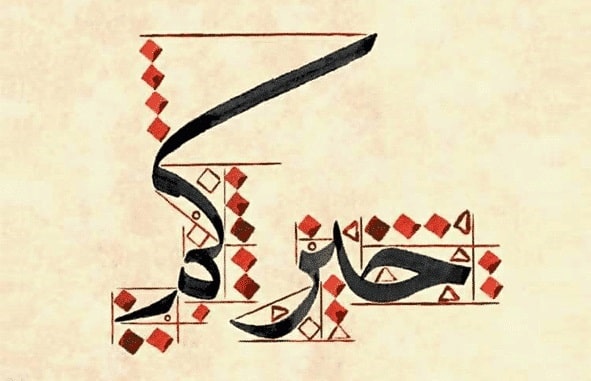Brief history of Arabic calligraphy
The early stages of Arabic calligraphy were very simplistic compared to the later developments in the script’s forms and glyph design. There are two reasons for this development in Arabic calligraphy. The first one is the expansion of the Islamic civilization to cover large areas on earth and many cultures from Africa, Asia, and Europe. Each of these cultures has made its remarkable contribution to developing Arabic calligraphy and its master calligraphers. The second reason was the early interest in learning to communicate across these wide areas of the Islamic civilization. Many artists and scientists used Arabic scripts to spread their art or scientific theories.
The first development of Arabic calligraphy started with the first written version of the Qura’an by Zaid Ibn Thabit during the caliphate of Utham Ibn Affan (644-656). This version was written using the Jazm script, an early predecessor of the Kufi script, which we will cover later when exploring the different styles of calligraphy. Based on the Development of The Arabic Script, an article by M.J. Alhabeeb, professor of the University of Massachusettes, the development of the Arabic script continued during the Umayyad dynasty in Damascus with one of its historic achievements of architecture and calligraphy, the Dome of the Rock mosque (Qubatu-l-Sakhra) in Jerusalem. Khalid ibn Al-Hayyaj wrote the script on this monument.
Moving forward, the Arabic calligraphy continued to develop through the different ruling dynasties in Kufa of Iraq, Baghdad, and Cairo. This era saw the emergence of different Arabic scripts, such as the Kufi, Thuluth, Naskh, Muhaqqaq, Riqa’a, and Tawql.
In Persia another script, called the Ta’aleeq, was developed in the early ninth century that was later combined with the Nask script to form the Nesta’sleeq. The evolution of Arabic calligraphy continued until the last dynasty of the Islamic empire, which was the Ottoman reign in Istanbul, Turkey. During this period more complex scripts have appeared, such as the Diwani, Jeli Diwani, Tughra’a, and Siyaqat.
In addition to these major evolutionary stages, other developments have also taken place in various other parts of the Islamic empire in Spain, Morocco, India, Afghanistan, and China.

